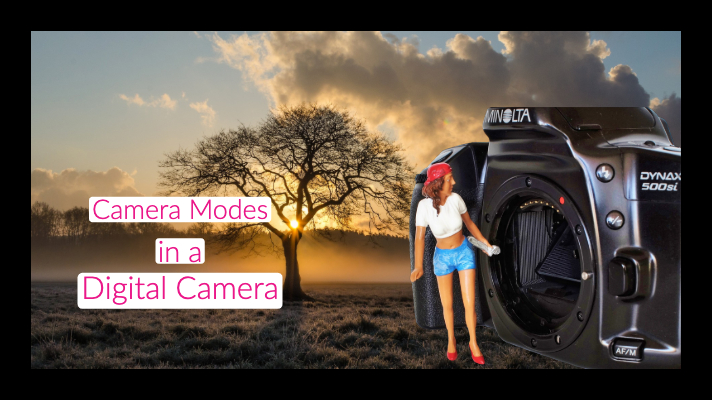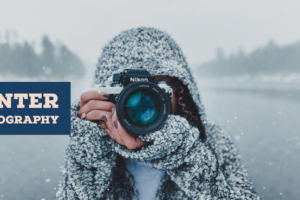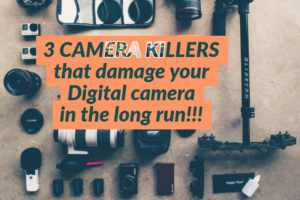
I sometimes ask my friends who own a DSLR or mirrorless camera about the mode that they always use in their photoshoots. As expected, most of them replied “Manual Mode” and some of them replied “AV Mode”. Upon asking the same question to the ones who stepped recently into the world of digital photography, the response again was as expected, “Automatic Mode”.
Several modes are available in a camera depending on the kind of camera. Here in this post, I am going to help you understand each of those modes. Although it is very basic information, it will help you understand each mode perfectly and will also help you to take your photography to the next level.
FULLY AUTOMATIC MODES
Automatic Mode
Yes, what you are thinking is right. It is the most basic mode in any camera. In Automatic mode, you promote your camera to be the judge and let it decide all the settings including ISO, aperture, shutter speed, focus, white balance, flash, and focus to take the best shot it can. There are also cameras which will allow you to override flash or change it to red-eye reduction.
Although this mode would give you stunning results in shooting conditions, you should know that you are not passing on any information about your needs to the camera. The camera just guesses and takes the shot when you click the shutter button.
Macro Mode
All thanks to the time that we are living in the presence of strobe lenses, capturing Macro shots has become more easier than ever before. For those of you who want to capture macro shots using your camera, see if there is a dedicated macro mode in it. It is usually indicated by a flower icon.
The Macro Mode allows you to move closer to the subject to take a closeup picture. This is perfectly suitable for capturing small objects, insects or flowers. Based on the light conditions, you might also have to use a tripod and external light to brighten your subject. I will be speaking more about macro photography in detail later in any of the upcoming posts. Stay tuned for it.
Portrait Mode
When you turn the Portrait Mode On in your camera, it chooses an aperture around f/2.8 to create a bokelicious background. Setting the right focus is the most important thing in this mode. And your camera will take care of the rest. It works well mostly according to our expectations when there is only one subject in the frame. You might have to use an additional light source if there is more sunlight on your subject.
Sports Mode
Just as the name sounds, it is used for photographing subjects in action. It is a perfect choice to capture wildlife, moving cars, pets, sports, etc. The secret of the sports mode in capturing faster modes lies in a shutter speed of the camera. The shutter speed is automatically increased to freeze the moment.
Landscape Mode
This mode is ideal to capture scenic frames like a mountain or trees or where everything is at rest. The camera chooses an aperture like f/11 or smaller than it to give you a larger depth of field. It is also a perfect choice to capture wide scenes and if you also have a wide angle lens, the rest is history.
As the camera would choose a smaller aperture, it might also lower the shutter speed to increase the flow of light into the sensor. You might have to use a tripod in such situations to ensure that the camera is stationary in order to avoid shaky output.
Night Mode
This is really an interesting mode to play with. Night Mode is usually used for situations where there is low light and it sets your camera to use smaller shutter speed to capture all the details of the background. At times, a flash is also fired to brighten your subject.
Usage of a tripod is recommended in this mode to avoid the background blur. However, capturing the shots without a tripod can also be interesting to create an attractive background blur.
Movie Mode
This mode as it sounds is used to capture both video and sound. Almost all the digital cameras these days are equipped with this mode to help you capture good videos. Though the quality of the videos shot in a digital camera is not on par with the ones that are shot in high-end video cameras, you must still be able to create wonders through this mode if you have a suitable lens.
FULLY MANUAL MODE
Manual Mode
Just as the name sounds, everything is manual in this mode which means that you are the judge and not the camera in adjusting each and every setting of the camera. You can set everything from ISO, shutter speed and aperture to White Balance, flash etc.
Capturing photos only in the manual mode will not only help you get a better image but also increase your knowledge in photography. It might be difficult in the first few days. But if you would be consistent and not give up, mastering the manual mode is not going to be a gigantic task for you.
SEMI-AUTOMATIC MODES
Aperture Mode (AV or A)
Aperture Priority mode is really a semi automatic mode as you will allow the camera to choose the ISO, white balance, shutter speed etc. based on the aperture you choose. Sometimes, you might need different kinds of outputs based on the needed depth of fields. We have already discussed about the shallow and larger depth of fields that an aperture can create in a dedicated post about Aperture on this blog. I’d suggest you read that post to know more about the Aperture and understand what can be achieved by setting only an appropriate aperture in the camera.
Shutter Priority Mode (S or TV)
Just as how the camera sets everything for you based on aperture you would choose in the Aperture mode, it also does the same for the shutter speed you would choose in the Shutter Priority mode. For example, you might want to use faster shutter speed to capture moving objects or choose a slower shutter speed to create light trails. So everything is based on the shutter speed in Shutter Priority Mode.
At the end of the day, the Shutter Priority Mode gives you complete control over the Shutter speed of the camera if you have a clear idea about the shutter speed.
Program Mode
The Program mode is also more like the automatic mode, but it offers you a little more control over some of the settings like ISO, white balance, flash etc. You might have to check the manual book of your camera to know more about this mode.
There are also other modes like Panorama, Beach, Fireworks, Indoor and much more. All of them are easy to use and are self-explanatory. However, let me know in the comments section if you want a post on those modes as well.
Having explained all the modes, I have got now only one thing to tell you. Try experimenting with each mode in every situation to learn more easily about its wonders and limitations.




